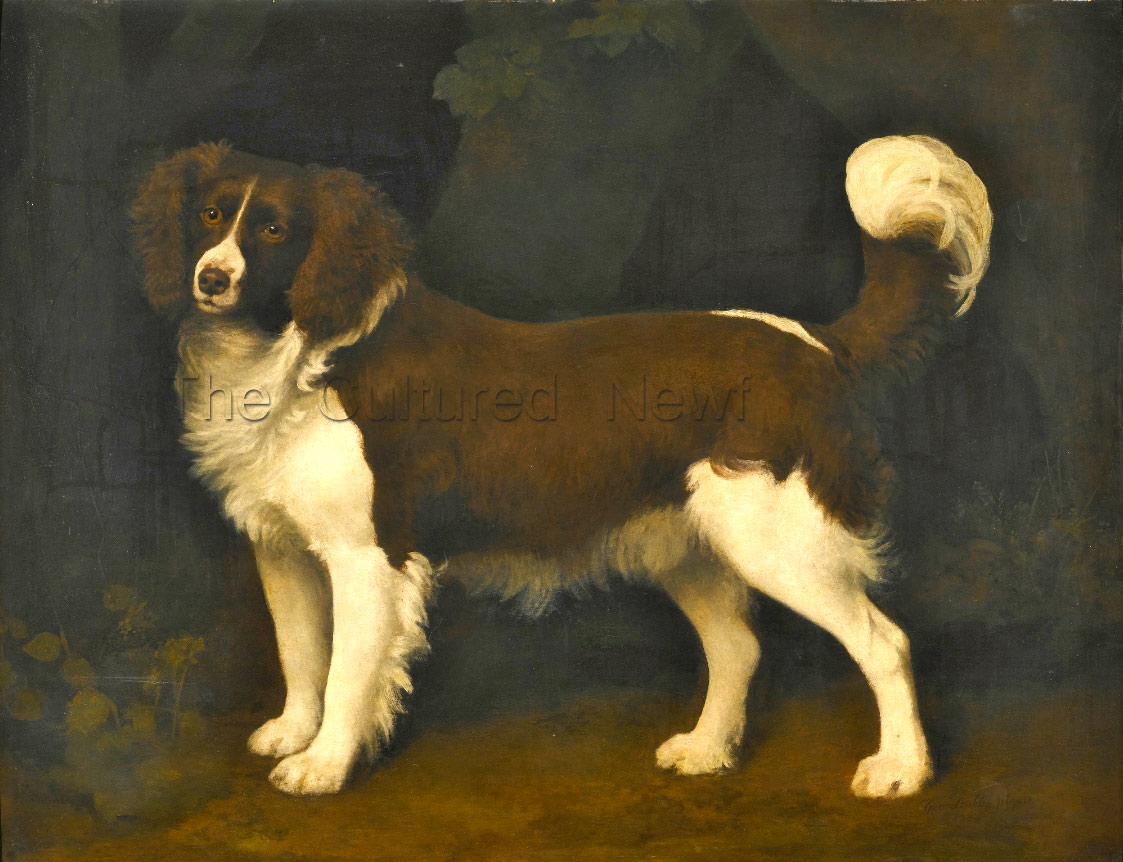 Portrait of a Dark Brown and White Newfoundland Spaniel
Portrait of a Dark Brown and White Newfoundland Spaniel (1784)
(oil on panel, 27" x 36-1/2")
by
George Stubbs
Stubbs (1724 - 1806) was one of the preeminent British animal painters prior to Landseer. (Indeed, Landseer greatly admired Stubbs' work, and owned several pieces by him.)
Stubbs' most famous painting of a Newfoundland, Portrait of a Newfoundland Dog (also discussed here at The Cultured Newf), was made some 19 years after this work. This is, in fact, one of Stubbs' earlier dog portraits, a genre for which he became increasingly well known (and which brought him significant financial as well as critical success). Stubbs in many ways was at the forefront of the Romantic-era shift in cultural sensibilities in which dogs came to be seen as more than merely utilitarian assets; his paintings contributed to the growing sense of the specialness of dogs, of their importance as companions and their capacity for feeling.
It may seem odd that the title of this work, which shows a dog arguably similar to today's Newfoundlands, refers to a "Spaniel." But keep in mind that in the late 18th and early 19th centuries, the classification and relationships of various dog breeds was only beginning to be explored, and was very much in flux, and breed standards as we know them today did not exist. Some notable writers of the period, such as the veterinarian William Youatt, believed that Newfoundlands were indeed a variety of, or closely related to, spaniels. Of course, it's also possible that the title refers simply to a spaniel that came from Newfoundland, as this dog is arguably similar to several spaniel breeds, but the trees in the background provide something of a sense of scale which indicates this is a very large, substantial dog.

